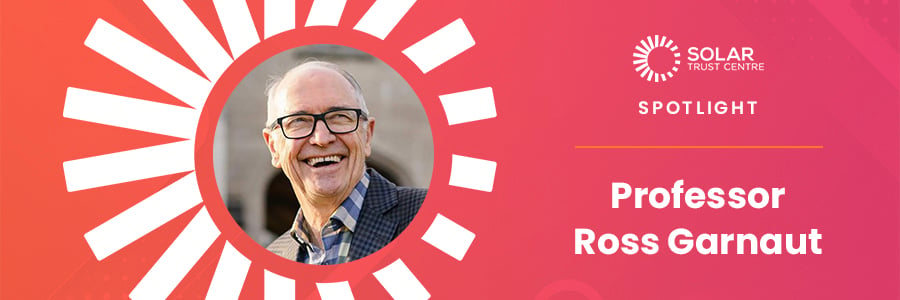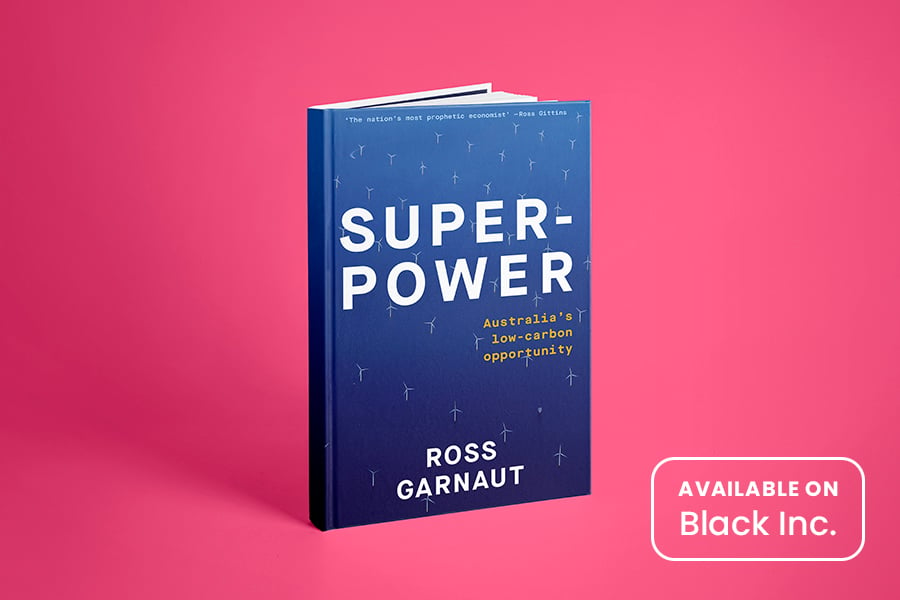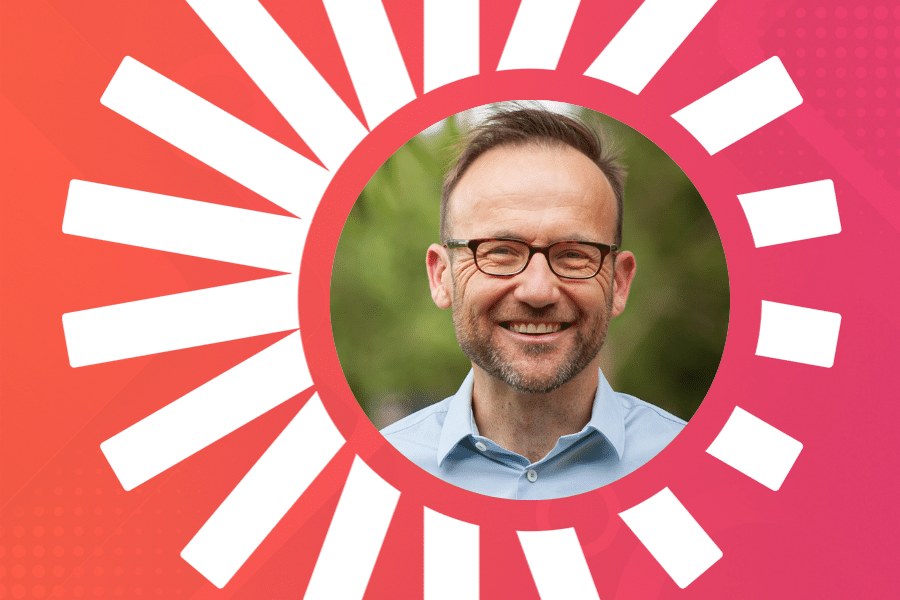New $100 Million Fund Will Focus on Large-scale Blue Chip Solar Assets
A new $100 million renewable energy investment fund that is aiming to buy established solar farms in Australia has been launched by Melbourne-based...

Professor Ross Garnaut is an Australian economist based in Melbourne. Perhaps best known to our readers as the person behind the 2008 Garnaut Climate Change Review – which provided an in-depth assessment of the impact of climate change on Australia’s economy, and the finances surrounding measures to address it – in addition to academia Ross has also served as Australian Ambassador to China from 1985 to 1988, and in 2015 took up the role of chairman of ZEN Energy – a renewable energy retailer founded in 2004 in South Australia – among other professional pursuits.

In recent years Ross has released two books, Superpower: Australia’s Low-Carbon Opportunity, and Reset: Restoring Australia after the Great Crash of 2020. In this interview, Ed Kennedy of the Solar Trust Centre team chatted with Ross about his books and broader thoughts regarding the opportunities and problems that are ahead of Australia in the years to come, with a particular focus on renewable energy and climate change. The following is a transcript of the interview.
1. Thanks for speaking with us, Ross. You’ve said Australia won’t ‘snap back’ following the pandemic, and that going back to the ‘old normal’ isn’t the path ahead. What should we be aiming for instead of that?
In my book Reset which came out in February this year, I pointed out that economic performance in the half a dozen years before the pandemic – 2013 to 2019 – was pretty miserable by the standards that matter most to Australians. Per capita output growth was the lowest among all developed countries. That’s pretty bad. Real wages were pretty well stagnant over that period.
Unemployment was stuck around five point something, and underemployment rose and rose through that period. Underemployment – being people who’ve got a job but not working the number of hours they’d like to work – increased. This contrasted with other developed countries, such as the United States. The U.S. began in 2013 with unemployment still pretty close to around 10% as it was after the Global Financial Crisis, and they’d had a deep recession during the GFC. We didn’t.
So we started off with unemployment at around half of theirs, and we stayed there, whereas they went from unemployment still within range of that 10% figure to under 4% before the pandemic in those half dozen years. So we shouldn’t aspire to go back to where we were. That was bad performance.
In my book Reset I’ve suggested we should aim to use the situation that had emerged with the pandemic recession to reset policy so that we can aspire to productivity growth, income growth, and one of the things we can do is take advantage of our opportunity to be the superpower of the zero emissions world economy. There are very large opportunities for profit and productive investment in the new industries which once underway would help to lift our productivity, and lift income and wages, moving us well beyond stagnation, the likes of which we’d been seeing in the half dozen years before the pandemic recession.
So going back to where we were isn’t quite good enough, and there’s something much better we can do if we get it right. My book Reset was about getting it right.
2. 2020 and beyond was a period where lockdowns saw a dramatic reduction in human movement in many ways, such as stopping the daily commute and any travel outside their local area for many people. As lockdowns end, we begin to open up once more, and many of us are resuming such activities as the aforementioned. Accordingly, what do you think Australians should feel are their clear takeaways from that period in terms of how we live, and how we respond to climate change going forward?
Oh, I don’t think there have been many major lessons to be learned from the way we live our lives and do our work, though there have been some. I think the biggest thing is about efficiency. We’ve learned it’s not as efficient to jump on planes to other states and countries quite as often as we used to. If I think back 40 years personally, I think there was probably rarely a month I wasn’t on an international flight. There was never a week I wasn’t on an interstate one.
Now we learn with Zoom, Teams, and other electronic communications it was quite efficient to do without some of those long commutes, as you save a lot of time and become more productive overall. This said, face-to-face meetings are still important for some purposes, when you’re getting to know people, it’s very important to pick up all the nuances you can pick up in someone’s face that you don’t quite pick up electronically.
So I think electronic means can help us diminish some of the need for travel that we used to do whether it’s internationally, interstate, or the regular commute into a city office each day. But we won’t do away with it altogether. What we’ve learned is we can modify the old way of movement, and that helps a bit in terms of reducing the use of energy, and given the way in which we produce some energy now via fossil fuels, it helps to diminish greenhouse gas emissions. It’s a marginal change overall, but if we learn the lessons right it helps and will help our productivity too.
3. As I trust you know well the bushfires of the 2020 season saw the predictions of the Garnaut Climate Change Review garner new attention once more, in particular the prediction that fire seasons would “start earlier, end slightly later and generally be more intense”, and that in turn it was written, “This effect increases over time, but should be directly observable by 2020.”
Mindful of the length between 2008 and now, there have of course been many negative developments in this period – such as the 2020 bushfires – but also positives, such as the growth of Australia’s solar power industry, and the renewable energy industry more widely. What has been the biggest negative and the biggest positive between 2008 and now to your mind?
The biggest negative has been some countries – and Australia is the worst amongst the developed countries – we haven’t made policies to reduce emissions. In fact, Australia’s gone backwards. We had in place a world-leading set of policies between 2012 and 2014. We introduced the Australian Renewable Energy Agency, we had the Clean Energy Finance Corporation. The institutions stayed alive thanks to the extraordinary and quixotic intervention by Clive Palmer in the Senate, which blocked the Abbott government’s attempt to get rid of the Renewable Energy Agency and the Clean Energy Finance Corporation. But though the institutions were kept, they’re not the same today as they were, and neither is government policy.
So the biggest negative is despite it being clear enough then in 2007-2008 when I did the Garnaut Climate Change Review that we faced very large problems, we actually haven’t done very much about it, and in particular, we haven’t put in place the policies that would allow us to do a lot at relatively low cost.
The biggest positive – and it’s a big one! – is that the cost of alternative energies have come down much more rapidly than we expected. Just take solar PV, I did very detailed modelling of the cost of the energy transition in my original report, and in the longest term modelling I went through to the end of the 21st century. You have to write in some assumptions in such a circumstance concerning the costs of the technology and how it will change over time.
I wrote in the assumption the costs of solar would fall by a few percent per annum for a decade or so after the report came out. That at the time was criticised for being too optimistic regarding the reduction of costs. I was pretty confident that it wasn’t too optimistic, as I consulted with people working on the pure science of PV, and also businesses that were making PV. I talked to companies, as well as scientists in Australia, Japan, Korea, China, the United States, Britain, Germany, and other parts of the European Union, so I was pretty confident I was reflecting the best available knowledge in assuming the cost would come down a few percent per annum.
They’ve actually come down far faster than that. Several times faster than that. It’s not just PV, wind has also come down. Batteries have also been decreasing in cost. The electric car has come down in cost much more rapidly than we’d anticipated back around 2007-2008.
So the big negative is we don’t have in place the best policies, and in Australia, we’ve actually gone backwards while other countries have moved forward, albeit not as fast as they otherwise might have. But there’s a very big plus in that the job ahead is actually not as hard – not as costly – as it would’ve been because the technologies have fallen rapidly in price.
4. Many would say there’s a clear disconnect in this country between Australia’s vulnerability as a developed nation to climate change and our national policy. What factors do you feel can help address this disconnect in terms of influencing government policy and public attitudes more widely?
I said in my book Superpower which came out in 2019 that recognition of Australia’s huge economic advantages in the zero emissions economy could be the bridge over which those who didn’t want to face up to the reality of the science could walk, even if they didn’t want to recognise the science was real, they could still recognise the economic opportunity. As a result, I feel there’s a bridge in which all Australians could walk when it comes to dealing with the problem. I think we’ve come a fair way with that.
I also don’t think there’s any doubt surrounding where most Australians are at when it comes to this area, and political leaders who appeal to Australians’ interest in strong action on climate change will do well on that appeal.
5. Engaging in futurology is always difficult, but at a glance what does an Australia look like in future that ‘misses the boat’ in terms of seizing upon its chance to become a renewable energy powerhouse?
I think that we face some pretty big headwinds if we don’t grab the opportunity before us. In my book Reset I point out that expansion of exports is crucially important for growth in Australian incomes and employment. We face a few headwinds that are very big. One is problems in our relationship with China as China is by far our biggest export market. Two, another problem for our exports is that the rest of the world is committed to reducing emissions even if we’re not, so exports like coal will decline.
Some of our service industries have also taken a big hit during the pandemic. Many universities have been hit very hard by the pandemic and been crippled financially, so even when things open up they won’t do as well.
So they are big headwinds, and if we were just at their mercy we would have to be ready for a continuation of income stagnation, and the rising underemployment that we had before the pandemic, and things would get worse and worse.
But as I point out in Reset, if we grasp the zero emissions opportunity to be the superpower of the world economy, we can use tailwinds which are stronger than headwinds. We can return to full employment with rising incomes. That’s the difference, and it’s a difference worth working for.
6. You’ve said Australian governments shouldn’t fear debt when it comes to investing in renewable energy. Yet both at the federal and state level there are record deficits being seen right now. What would you say to Australians who are afraid of the government adding more debt to invest in renewable energy?
When you’ve got substantial unemployment, then running fiscal deficits is economically sound. It’s not inflationary while you’ve got unemployment. Now you have to be careful to pull back those deficits once you’re at full employment. You don’t want to keep stoking inflationary pressures – so you need a flexible fiscal policy – but certainly, while you’ve got unemployment and underemployment, deficit funding is a sound part of overall economic policy.
7. We’ve necessarily touched on a number of important but confronting aspects of Australia’s current identity and the challenges that lay ahead. Let’s end with a positive question: What does an Australia at 2050 look like if it properly seizes upon the opportunities to grow its renewable energy industry as you’d aspire to see it do?
Australia remains the biggest exporter of mineral materials to the world, but these are in processed form and not the raw materials. Australia produces about 40% of the iron ore that’s used in the world. In the zero emissions world economy, by far the cheapest place to turn iron ore into iron metal will be Australia. If we did that, I say we’d reduce global emissions by about 3%. For context, if we reduce all of our existing emissions to zero, I say we’d reduce global emissions by about 1%, so we could do three times that by processing our own iron!
But it’s not just iron. We are the world’s biggest exporter of aluminum raw materials. We are the cheapest place in the world to turn that into metal in the zero emissions world economy. The biggest growth commodity in the world in the modern economy moving towards zero emissions is pure silicone. Silicone is made from sand or quartz – and Australia’s certainly got plenty of those – and a huge amount of energy. It will have to be renewable energy in the zero emissions world economy, and Australia is the natural place to do that.
Most of it is done in China at the moment, it’s much more expensive there, and it will be more expensive still when they can’t use coal and have to use renewable energy to do it. We’ll be the cheap place to turn Australian quartz and sand into pure silicon for computers and PV panels, and the demand and use for computers and PV panels is rising rapidly, and driving growth in demand for silicone.
Then there’s critical minerals like cobalt, copper, graphite, lithium. They are all available as raw materials in Australia, and all need lots of energy and processing. It will be renewable energy in the zero carbon world that meets these needs, and we’ll be a more important exporter of processed minerals than we are now of coal and liquified natural gas, much more important in fact.
We’ve also got great strengths in the use of our landscape to capture carbon, export carbon credits, and grow biomass. We’ve got an abundance of woodland. It’s a hugely valuable resource in the zero emissions economy. If we develop that resource we get carbon credits, but we also have biomass. Chemicals and petrochemicals that are now made from oil or gas or coal will have to be made from biomass plus renewable energy in the zero emissions world economy.
We are the place to do that, so we’ll be a diversified exporter of a wide range of products from the Australian landscape, and it’s a characteristic of all of the new industries that they’re based in rural and provincial Australia. So we’ll see a shift from the Australia of the first two decades of the 21st century that grew mainly in the big cities of Melbourne, Sydney, Brisbane, and Perth, to much more decentralised growth. It will be the renaissance of rural and provincial Australia, and I think that that’s an Australia that most of us will be pretty comfortable about.
STC thanks Ross for his time.

Further information on Ross’ books can be found here:
A new $100 million renewable energy investment fund that is aiming to buy established solar farms in Australia has been launched by Melbourne-based...

Q&A with Mr Adam Bandt MP: COVID-19, Climate Change and the Future of the Australian Renewable Energy Industry Adam Bandt MP is an Australian...
If Australia’s renewable energy target was changed to 50% by the year 2030, 28,000 jobs will be created as stated in the report by the Climate...